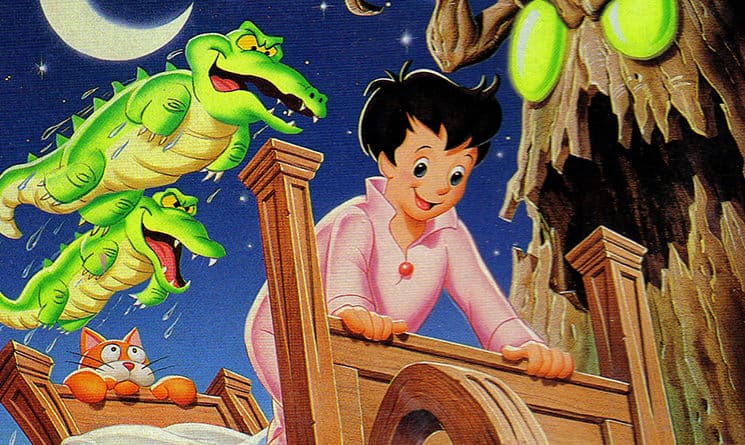“Little Nemo: The Dream Master”
(Capcom, 1990)
Hey, Capcom! It’s 1990, and you’re coming off two of the most critically and commercially successful video games of the last year — “Duck Tales” and “Mega Man 3.” What’s next? An adaptation of a 1989 Japanese box-office bomb that was based on an 85-year-old American comic strip? Oh. OK. Any plans for “Mega Man 4?”
Cartoonist Winsor McCay debuted his comic strip “Little Nemo in Slumberland” in the New York Herald 110 years ago this October. McKay’s detailed, experimental layouts found legions of fans worldwide. One of those fans was Yutaka Fujioka of Japan. Fujioka was such a passionate fan of McCay’s work that in 1977, he personally asked McCay’s descendants to grant him the rights to make a Nemo film through his company, Tokyo Movie Shinsha. He succeeded. Fujioka met with George Lucas and Chuck Jones, who both passed on the film. Ray Bradbury and the artist Mœbius were hired to write the script, while fantasy illustrator Brian Froud consulted on visuals and the award-winning Sherman brothers wrote songs for the film. Leading video game developer Capcom secured the rights to make a video game adaptation for the Nintendo Entertainment System. After more than a decade, Fujikoa’s film debuted in the summer of 1989. It was a disaster.
Capcom was already making an English version of “Little Nemo: The Dream Master” (known as “Pajama Hero Nemo” in Japan) when the film failed to find an audience in the United States. Eventually released in September of the following year for the NES, it was the game you might rent if no other games were available.
It’s a shame, because this underrated Capcom title might be one of the best games you’ve never played. The lack of name recognition and overly-cutesy box art made “Nemo” look like it was for younger players, and on the eve of the Super Nintendo’s debut, it was quickly forgotten.
But with gameplay reminiscent of the “Mega Man” franchise and the detailed graphics and humor of “Duck Tales,” Nemo is the perfect combination of Capcom’s biggest hits. Don’t let the fact that Nemo uses candy as a weapon and gains extra abilities from his animal friends lull you into thinking this game is easy. With a higher degree of difficulty than most “Mega Man” final boss fights, the welcome challenge — especially in the visually fascinating Topsy-Turvy, House of Toys and Nightmare Land levels — makes this a great game for novice and expert alike.
Most Capcom games have a secret weapon and this one is no different. The alternatingly catchy and moody score can stand up there with “Kid Icarus,” “Metroid,” and “Maniac Mansion” — three titans of eight-bit music. Junko Tamiya, who was responsible for earlier Capcom scores for “Gun.Smoke” and “Bionic Commando,” deserves as much credit as I can give her.
A video game you’ve never played of a film you’ve never seen of a comic you’ve never read. This isn’t a dream. It’s real. And it’s spectacular.
Hidden Gem or Total Junk: Hidden Gem

